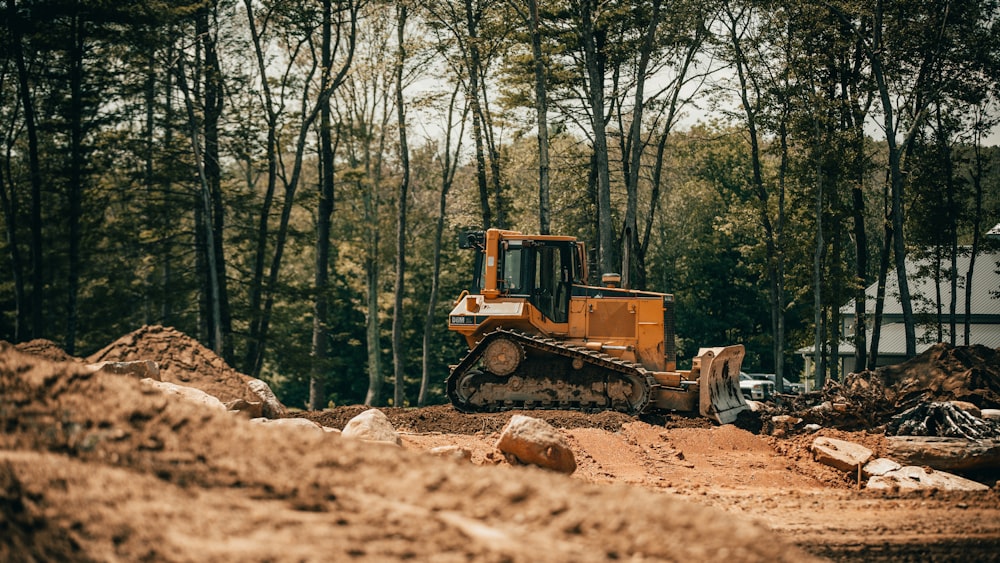A basement excavation can be an exciting but complex undertaking, especially in the UK where regulations and environmental considerations play a significant role in determining the feasibility and design of your project. Thankfully, with the right knowledge and guidance, you can confidently tackle these challenges and turn your basement excavation into a successful and rewarding experience.
In this guide, we'll walk you through each step of the process, from soil and site analyses to understanding the legal requirements and choosing the right basement excavation method. That way, you’ll be well-equipped to embark on this transformative journey and create the basement space you've been dreaming of.
Understanding Basement Excavation
Let’s start with the basics: what exactly is a basement excavation?
A basement excavation is more than just digging a hole under your house; it's a meticulous process that transforms unused earth into valuable living space. In the UK, where expanding outward is often limited by property boundaries and planning permission, digging down can be a strategic solution to maximise your property's potential and create additional space. This added space can serve various purposes – from a cosy home cinema to an expansive home office, a private gym or an extra bedroom. It's also a savvy investment as, by increasing your home’s functional space, you're likely to boost its market value significantly.
Planning Your Basement Excavation
The basement excavation process involves carefully considering various factors including soil type, water table and legal requirements. Each of these elements plays a crucial role in determining the feasibility and approach to your excavation project. Whether you're creating a new living area, a storage space or a bespoke feature like a wine cellar, understanding the basics of basement excavation is key to a successful project.
Let’s explore these essential steps in a bit more detail.
Soil and Site Analysis
The first step of the basement excavation process involves understanding the soil and site conditions of your plot. This analysis is pivotal, as the soil type directly impacts the excavation method, structural support requirements and overall project feasibility.
In the UK, soil types can range from dense clay to loose sand or rocky substrates, each presenting unique challenges. For instance, sandy soils may require more extensive shoring to prevent collapse, while clay soils can be prone to water retention issues. Additionally, the analysis should assess the site's topography, proximity to neighbouring structures and the presence of any underground utilities or natural obstacles. This thorough evaluation not only ensures a safe excavation process but also helps you anticipate potential problems, leading to more accurate budgeting and planning.
Water Table Analysis
The next step is requesting a water table analysis to determine groundwater levels in the soil around your property. This process is equally important as it will help you determine how deep you can dig and what drainage solutions and waterproofing methods you will need in your basement.
This test is typically conducted by drilling test wells, monitoring groundwater levels over time and using instruments like piezometers, followed by a professional assessment to guide construction decisions regarding depth, waterproofing and drainage.
Understanding Legal Requirements
The final stage of the planning process is understanding any legal requirements so that you can make sure everything's above board and avoid any unexpected surprises down the line.
For instance, most basement excavation projects in the UK will require planning permission, especially if they involve significant changes to the building's structure. It's essential to consult with your local council early in the planning stage to understand specific requirements and restrictions. Aside from planning permission, this could include considerations for building regulations, party wall agreements with neighbours and environmental impact assessments. Ensuring compliance with these requirements not only helps you avoid potential fines and legal issues but also ensures the safety and structural integrity of your basement excavation.
Choosing the Right Excavation Method
Several methods can be used for your basement excavation, each with its own advantages. Your choice will depend on factors like soil type, the size of the project and your budget. As a result, you should always consult with a professional to determine which excavation method will work best.

Open Cut Excavation
Open cut excavation is a widely used method where a large area around your home is excavated. This technique provides easy access for construction equipment, and it is ideal for large projects. However, an open cut excavation requires significant space and can be more disruptive to the surrounding environment.
Top-Down Excavation
A top-down excavation is where the structure's upper levels are constructed simultaneously as the basement is excavated beneath. Particularly advantageous in urban areas with limited space, top-down excavation minimises the disruption to surrounding properties and the local environment. It also helps in reducing the overall construction timeline, as multiple phases of the project can be carried out at the same time. However, this method requires meticulous planning and coordination between various construction teams to ensure structural integrity and safety at all stages of construction.
Underpinning
Underpinning is a targeted basement excavation method that involves strengthening an existing building's foundation in sections. This technique is particularly useful for smaller projects or in areas where minimal disruption is crucial. It allows for basement creation under existing structures, ensuring stability while gradually expanding the underground space.
This method is highly controlled and requires careful planning, but it offers a less invasive alternative to traditional excavation methods. As a result, it tends to be the preferred choice in densely populated areas or for properties with limited access.
Navigating the Excavation Process
Here are some best practices to help you navigate the basement excavation process effectively:
- Site preparation: Begin by clearing the area and establishing access for construction equipment. Implement safety measures to protect the site and its occupants.
- Excavation planning: Develop a detailed excavation plan, considering the soil type, proximity to neighbouring structures and underground utilities.
- Phased approach: Excavate in stages, especially in dense urban environments, to maintain structural integrity and manage risks effectively.
- Monitoring and adjustments: Continuously monitor the basement excavation process. Be prepared to make adjustments as necessary based on ground conditions and other unforeseen factors.
- Communication: Maintain open lines of communication with your contractor and engineering team. Regular updates can help you pre-empt potential issues.
- Safety compliance: Adhere strictly to safety regulations and best practices to ensure the well-being of workers and the surrounding community.
- Environmental considerations: Minimise the environmental impact of your basement excavation by managing waste and runoff effectively.
Hiring the Right Professionals
Finally, the success of your basement excavation largely depends on the team you choose to undertake the project. Make sure you look for contractors with experience in basement excavation. Check their credentials, ask for references and review their portfolio of completed projects. You will also need an architect to help design the basement space, and a structural engineer to ensure the integrity of the construction. Their expertise is invaluable.
At JM Construction, we have extensive experience in basement excavation and a deep understanding of the unique challenges it presents. Our team of skilled professionals is equipped to handle every aspect of your project, from initial planning and design to the final construction phases. By choosing JM Construction, you're not just hiring a contractor; you're partnering with a team that is committed to bringing your basement excavation to life with precision, safety and excellence.
Tags:
added valueFebruary 1, 2024








Comments